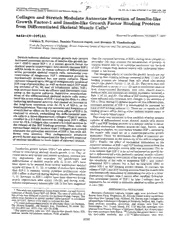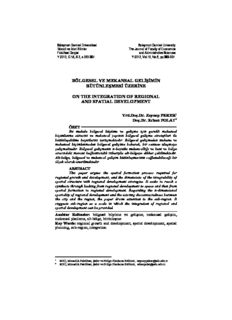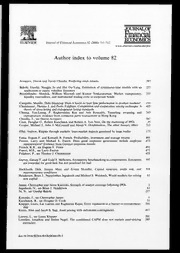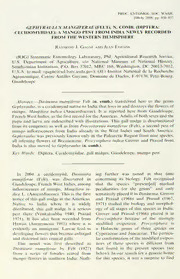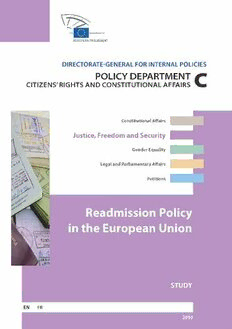
Readmission Policy in the European Union PDF
Preview Readmission Policy in the European Union
DIRECTORATE GENERAL FOR INTERNAL POLICIES POLICY DEPARTMENT C: CITIZENS' RIGHTS AND CONSTITUTIONAL AFFAIRS CIVIL LIBERTIES, JUSTICE AND HOME AFFAIRS Readmission Policy in the European Union STUDY Abstract This study sets out to explain the drivers shaping cooperative patterns on the readmission of unauthorised third-country nationals, whether at bilateral or EU level. It lays emphasis on the existence of a predominant bilateral readmission system in which EU agreements are inextricably embedded. As a result of the entry into force of the Treaty of Lisbon, the reinforced political control of the European Parliament calls for an analysis of this system and of its implications for human rights observance. PE 425.632 EN This document was requested by the European Parliament's Committee on Civil Liberties, Justice and Home Affairs. AUTHOR Mr Jean-Pierre CASSARINO European University Institute E-mail: jpcassarino@eui.eu Under the coordination of the Justice and Home Affairs Section of the Centre for European Policy Studies (CEPS). RESPONSIBLE ADMINISTRATOR Mrs Cristina CASTAGNOLI Policy Department C - Citizens' Rights and Constitutional Affairs European Parliament B-1047 Brussels E-mail: cristina.castagnoli@europarl.europa.eu LINGUISTIC VERSIONS Original: EN Translation: FR ABOUT THE EDITOR To contact the Policy Department or to subscribe to its newsletter please write to: poldep-citizens@europarl.europa.eu Manuscript completed in September 2010. © European Parliament, Brussels, 2010 This document is available on the Internet at: http://www.europarl.europa.eu/studies DISCLAIMER The opinions expressed in this document are the sole responsibility of the author and do not necessarily represent the official position of the European Parliament. Reproduction and translation for non-commercial purposes are authorized, provided the source is acknowledged and the publisher is given prior notice and sent a copy. Readmission Policy in the European Union CONTENTS CONTENTS 3 LIST OF ABBREVIATIONS 5 LIST OF TABLES 7 LIST OF FIGURES 7 EXECUTIVE SUMMARY 8 INTRODUCTION 12 1. RECIPROCAL OBLIGATIONS, PRINCIPLES AND COMPETENCE 13 1.1 EU readmission agreements 14 1.2 A reaffirmed shared competence 16 1.3 Sincere cooperation 18 1.3.1 Procedures of notifications 19 1.3.2 Monitoring capacities 19 1.3.3 Convergence of contingencies and priorities 23 2. A PREDOMINANT BILATERAL DIMENSION 24 2.1 The fragile balance between costs and benefits 25 2.2 Grafting readmission on to other policy areas 25 3. THE DRIVE FOR FLEXIBILITY 26 3.1 The non-standard approach 28 3.2 Factors shaping the cooperation on readmission 32 3.3 Case studies 34 3.4 EU Mobility partnerships: Drawing on Member States experience 34 4. THE READMISSION SYSTEM 38 4.1 Repeated orientations and understandings 38 4.2 Shared perceived priorities 39 4.3 Implications for human rights observance 40 4.3.1 The search for operability 42 4.4 The issue of effectiveness 46 4.5 A public/private regulatory system 50 Policy Department C: Citizens' Rights and Constitutional Affairs CONCLUSION 52 REFERENCES 54 4 Readmission Policy in the European Union LIST OF ABBREVIATIONS ADS Approved Destination Status AVR Assisted Voluntary Return CIREFI Centre for Information, Discussion and Exchange on the Crossing of Frontiers and Immigration Coreper Permanent Representatives Committee ECRE European Council on Refugees and Exiles EP European Parliament EU European Union FRA European Agency for Fundamental Rights FRAN Frontex Risk Analysis Network Frontex European Agency for the Management of Operational Cooperation at the External Borders of the Member States of the European Union FSJ Freedom Security and Justice FYROM Former Yugoslav Republic of Macedonia GAM Global Approach to Migration IOM International Organization for Migration JRC Joint Readmission Committee NGO Non-Governmental Organization OJ Official Journal PACE Parliamentary Assembly of the Council of Europe RAU Risk Analysis Unit RCP Regional Consultative Process TC Third Country TCN Third-Country National TEC Treaty establishing the European Community TEU Treaty establishing the European Union TFEU Treaty on the Fonctioning of the European Union TL Treaty of Lisbon ToA Treaty of Amsterdam UN United Nations 5 Policy Department C: Citizens' Rights and Constitutional Affairs UNHCR UN High Commissioner for Refugees 6 Readmission Policy in the European Union LIST OF TABLES Table 1. List of EU readmission agreements...................................................................14 Table 2. List of Mobility Partnerships.............................................................................37 Table 3. Number of third-country nationals (TCNs) ordered to leave and third-country nationals who left the territory of each Member State, 2008-2009.......................48 Table 4. Number of returned third-country nationals from each Member State, top-10 nationalities, 2009........................................................................................60 Table 5: Number of third-country nationals ordered to leave from each Member State, top- 10 nationalities, 2009Table 6: Third-country nationals refused entry at the external borders from each Member State, top-10 nationalities, 2009..................61 Table 6: Third-country nationals refused entry at the external borders from each Member State, top-10 nationalities, 2009 ....................................................................62 LIST OF FIGURES Figure 1. Known bilateral agreements linked to readmission concluded between the Member States and Schengen associated countries, on the one hand, and the world, on the other, August 2010.................................31 7 Policy Department C: Citizens' Rights and Constitutional Affairs EXECUTIVE SUMMARY BACKGROUND Readmission agreements have been used for a long time as a key means of combating illegal immigration, whether at bilateral, intergovernmental or EU level. Since the entry into force of the Treaty of Lisbon, the European Parliament has acquired the power to give its own consent to the EU readmission agreement (Art 218 TFEU). There can be no question that the independent exercise of this function depends on the Parliament's ability to be kept informed during the negotiation process to acquire accurate data and knowledge about the actual rationale for readmission agreements, their configuration, their utility, and their implications for human rights observance. Moreover, it is the argument of this study that EU readmission agreements cannot be isolated from a predominantly bilateral system of cooperation on readmission in which most Member States are currently involved. Paying attention to this bilateral system is key to understanding the real challenges facing the development of a common readmission policy based on the fundamental rights principles that the Union seeks to advance in its external action. AIM This study sets out to explain the drivers shaping cooperative patterns on the readmission of unauthorised third-country nationals, whether at bilateral or EU level. It lays emphasis on the existence of a predominant bilateral readmission system in which EU agreements are inextricably embedded. As a result of the entry into force of the Treaty of Lisbon, the reinforced political control of the European Parliament calls for an analysis of this system and of its implications for human rights observance. KEY FINDINGS The TFEU reaffirmed, in a more explicit and unquestionable manner, the shared competence between the Union and the Member States in the field of readmission. The shared competence between the Union and the Member States should be driven by the principle of sincere cooperation. The respect of this principle presupposes, however, three conditions: 1) effective procedures of notification, 2) monitoring capacities, and 3) an optimal convergence of priorities and contingencies between the Member States and the Union. An optimal degree of convergence of priorities and contingencies between the Union and the Member States has not been reached so far. The mandate of the Commission consists in brokering an agreement, based on standard reciprocal obligations, procedures and protection rules. The EU readmission agreement is subsequently implemented at a bilateral level between each Member State and the third country concerned. 8
The list of books you might like

Haunting Adeline

The 48 Laws of Power

Better Than the Movies

The 48 Laws of Power

PostgreSQL 15 изнутри
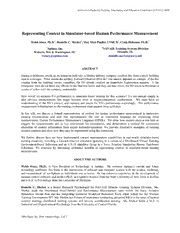
DTIC ADA473946: Representing Context in Simulator-based Human Performance Measurement

Python Scripting for ArcGIS
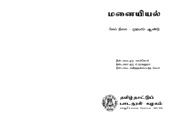
Home Science (Std11 - Tamil Medium)
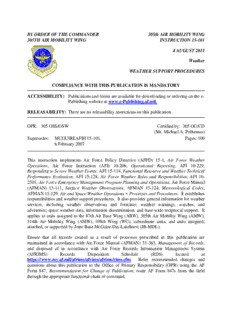
BY ORDER OF THE COMMANDER 305TH AIR MOBILITY WING 305th AIR MOBILITY WING ...
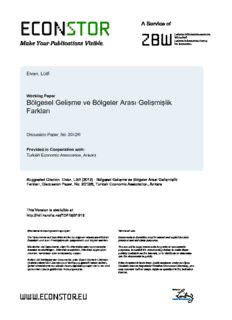
Bölgesel Gelişme ve Bölgeler Arası Gelişmişlik Farkları

c 2009 by Azeem Sarwar. All rights reserved. - ResearchGate

The Philosophy of Ontological Lateness

Detroit: A Biography
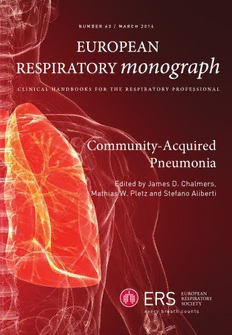
Community-Acquired Pneumonia
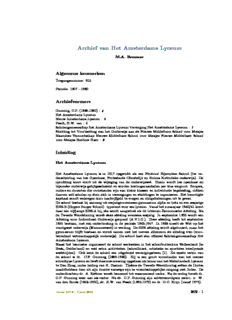
Archief van Het Amsterdams Lyceum

Economics without the Boring Bits


